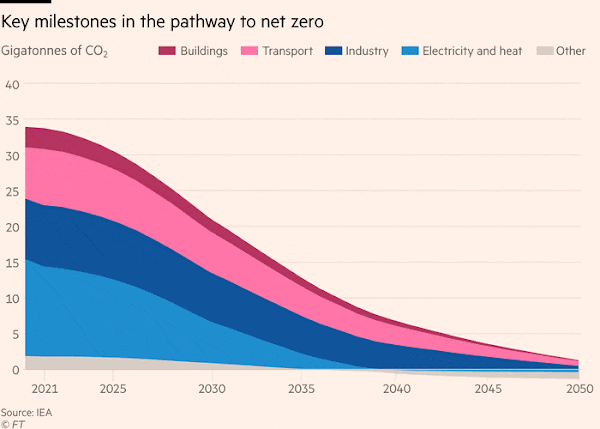Monday Study – Electrification Comes To The Midwest
MISO Electrification Insights
April 2021 (Midcontinent Independent System Operator)
Highlights
• Unprecedented electric demand from transportation, heating, and other end uses brings new opportunities and challenges for the MISO system.
• Electrification will shift the time of MISO’s greatest electricity demand from summer to winter. Additionally, the average daily load pattern will begin to show steep changes in the morning and evening, suggesting benefits from flexible generation and load.
• Planning, markets, and operations must consider the simultaneous transformation of both generation and load to ensure system reliability over the coming decades.
EXECUTIVE SUMMARY
After many years of negligible load growth, electrification is poised to transform the future of electric utilities and the electric power system with increased and more variable demand. Electrification is the conversion of equipment powered by fossil fuels to equipment powered by electricity. Its impacts include increased and more variable load, changes in seasonal peak, and interactions between electrification and a decarbonizing grid. Electrification Insights documents anticipated load growth and possible impacts of electrification, outlining opportunities and challenges for which MISO and its stakeholders can prepare.
While the level and pace of change are outside of MISO’s control, it is critical that MISO anticipate the impact of increased electrification in order to maintain reliability at a reasonable cost as the region evolves. Given that electrification is one of many trends (another is the changing resource mix) driving an unprecedented rate of change on the power system, MISO should understand the effect varying levels of electrification may have on its system in the coming decades. The overall goal of this report is to increase awareness of the potential reliability risks associated with electrification trends and to focus MISO and its stakeholders on working together toward solutions.
This report studies four electrification scenarios: Reference, Low, Moderate and High. The Reference scenario load growth follows recent patterns, with no electrification, corresponding to a 0.56% compound average growth rate (CAGR) of energy. The remaining three scenarios examine increasing levels of electrification assumed over a 20- year horizon with CAGR values ranging from 1.44% to 2.89% 1. [1 Scenarios do not consider responsive, flexible, or controllable load capabilities] For comparison, the MISO Futures examine varying levels of electrification, with energy CAGR values spanning 0.63% to 1.91%. Furthermore, this report focuses on a system where only 20% of annual energy is generated from renewable resources, below the 30% inflection point identified by the Renewable Integration Impact Assessment (RIIA).
Key insights:
• Electrification has the potential to transform MISO system-wide demand from the traditional summer peak to a winter peak. The shift is predominantly driven by the electrification of heating loads in commercial and residential buildings. As a result, the time of system risk expands to winter mornings and widens over summer afternoons. This may require MISO and MISO members to further evolve processes such as resource adequacy, resource accreditation, system planning, and outage coordination.
• When examining net load 2 [2 The expected output from all renewable generation is subtracted from the system load], two daily power demand peaks now appear over nearly all months: one in the morning and one in the evening. This shape change is due to uncontrolled electric vehicle charging and daily heating and cooling loads. This may require both operational changes and changes to the time periods MISO selects for transmission planning.
• Electrification requires an increase in ramping services, as the average annual load increases and becomes more variable (right). The increased ramping appears to be linked with uncontrolled charging patterns. This may require MISO and stakeholders to consider how to provide system ramping needs, and whether responsive, flexible, or controllable load should be a part of the strategy to manage ramping.
• Although the performance of responsive, flexible, or controllable loads was not included in the work for this report, research suggests that flexible loads have the potential to offset extreme ramps. Flexible load technologies include electric vehicles with vehicle-to-grid capability, water heaters, thermal energy storage, and space heating. This will require additional study and creative, collaborative problem solving with MISO stakeholders.
• Based on the current electrification landscape, some technologies will be adopted because they are costeffective; others may depend on federal, state, and local policy related to decarbonization. Because electrification is expected to be a key lever for economy-wide decarbonization, this suggests assumptions related to power system decarbonization should continue to include electrification effects, as was done in the MISO Futures.
• A growing load with a decarbonizing generation fleet will require significant investment (generation and transmission) in the MISO system over the next 20 years. For example, the Low scenario would require around 160 GW of new generation, including more than 60 GW of wind and solar, if 20% of annual energy comes from renewable sources in 20 years.
• Economy-wide decarbonization is an important catalyst for electrification, so examining electrification only in the context of a low-renewable system may not identify all system performance risks.
The interplay between an evolving resource mix and electrification requires deeper study to ensure that MISO can continue to meet the Reliability Imperative. The four focus areas of the Reliability Imperative seek to ensure that markets, transmissions, operations, and systems — all of which will be directly impacted by electrification — are ready for the coming transition. Even moderate levels of electrification with low levels of renewables change the demand on the system — increasing overall energy demand, changing intra-day patterns, and changing annual patterns — and MISO needs to account for any changes in its planning, operations, and markets. The table below outlines considerations for different MISO processes.
As a result of continued electrification, consumers may rely more on electricity for heat and transportation. Recent disruptions such as the western heat wave in August 2020 or the cold weather event in February 2021 offer a stark reminder of the importance of the electric supply to consumers. Planning for a reliable system now and in the future remains imperative.
There is time to prepare for a future with high load growth, but it is not a time to be complacent. As large corporations with substantial presence in the MISO footprint begin their own electrification initiatives, the electrified future may arrive quickly. For example, several large automakers have announced commitments to phase-out gasoline-powered vehicles from their offerings over the coming decades. MISO and its stakeholders have a shared responsibility to maintain electric reliability by addressing the holistic needs of the system, including anticipated changes to system load.
Consideration – Planning
• Continuing to incorporate changing load shapes in long-term planning studies to ensure that all periods of system stress are captured.
• Recognizing that shifting patterns of load growth could fundamentally shift flow patterns within MISO. By increasing the wintertime loads in the northern part of the footprint, electrification may contribute to new areas of system congestion and additional opportunities for economic transmission development.
• Examination into how transmission supports flexible generation that can quickly change its output to provide system ramping needs.
Consideration – Operations
• Monitoring seasonal load changes. Although the load shape changes result in higher summer and winter peaks, the load levels also increase across all seasons. With long-term maintenance outages traditionally taken in the spring and fall, higher “off-season” load may complicate outage scheduling.
• Increased visibility into flexible, responsive, or controllable load.
Consideration – Markets
• The possibility that the market may need to incentivize flexible, responsive, or controllable load as an alternative resource to provide system ramping


 click to enlarge
click to enlarge click to enlarge
click to enlarge click to enlarge
click to enlarge click to enlarge
click to enlarge click to enlarge
click to enlarge
 click to enlarge
click to enlarge click to enlarge
click to enlarge click to enlarge
click to enlarge click to enlarge
click to enlarge click to enlarge
click to enlarge click to enlarge
click to enlarge click to enlarge
click to enlarge click to enlarge
click to enlarge click to enlarge
click to enlarge click to enlarge
click to enlarge click to enlarge
click to enlarge click to enlarge
click to enlarge click to enlarge
click to enlarge click to enlarge
click to enlarge click to enlarge
click to enlarge click to enlarge
click to enlarge click to enlarge
click to enlarge
 click to enlarge
click to enlarge click to enlarge
click to enlarge click to enlarge
click to enlarge click to enlarge
click to enlarge click to enlarge
click to enlarge click to enlarge
click to enlarge click to enlarge
click to enlarge click to enlarge
click to enlarge click to enlarge
click to enlarge click to enlarge
click to enlarge click to enlarge
click to enlarge click to enlarge
click to enlarge click to enlarge
click to enlarge click to enlarge
click to enlarge click to enlarge
click to enlarge click to enlarge
click to enlarge click to enlarge
click to enlarge click to enlarge
click to enlarge click to enlarge
click to enlarge click to enlarge
click to enlarge click to enlarge
click to enlarge click to enlarge
click to enlarge click to enlarge
click to enlarge click to enlarge
click to enlarge click to enlarge
click to enlarge
 Plug-in Hybrids, The Cars That Will Recharge America
Plug-in Hybrids, The Cars That Will Recharge America Oil On The Brain
Oil On The Brain